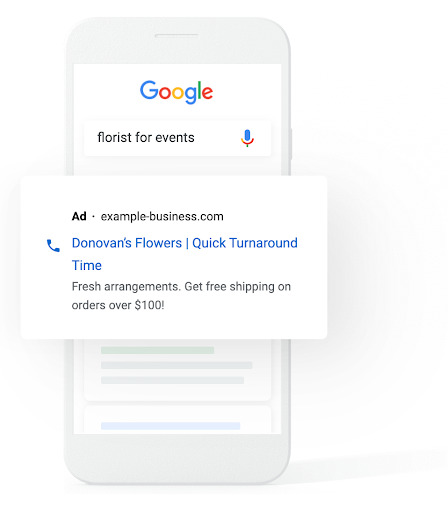Customer experience is a significant factor in your company’s growth. It helps you attract new customers, build meaningful relationships with them, and turn them into brand advocates. Above all, you will position your company as a customer-centric brand that cares about its customers.

Research studies back me up on that. Namely, 76% of customers expect companies to understand their needs. Precisely because of that, you need to keep improving customer experiences.
Here are a few CX trends you should apply in 2020 and beyond.
Enhanced Mobile Experiences Will Help You Stay Competitive in the Mobile-First Era
Five or ten years ago, having a mobile-friendly website was optional. However, in today’s mobile-first era, providing mobile-friendly user experiences should be at the top of your list of priorities. Did you know that over 40 .7 million Americans are mobile-only users? Unsurprisingly, they expect you to understand their preferences and address them. Statistics say that 52% of your customers would stop buying from you after a poor mobile experience. As online users continue to operate more in the mobile ecosystem, you should adopt the organization-wide mobile-first approach.
Having a responsive website is not enough. You need to keep customer interactions with your brand mobile-friendly across all digital channels, including your website design, email newsletters, product design, content marketing, outreach programmes, and so forth. For example, Evernote focuses on delivering exceptional user experiences across both mobile and desktop devices. The website design is clean, simple, and easily navigable on both desktop and mobile devices. A simple navigation menu, decluttered interfaces, prominent CTAs, and lots of white space help users find the desired content and information faster. Another example of a mobile-first brand is Domino’s that has developed a mobile app for its customers. Namely, the app uses tracking technologies to inform users about the status of their pizza orders. Moreover, customers are not limited to the one-size-fits-all, standard menu. Instead, they can order tailored takeaway meals via the mobile app, which is perfect for personalizing customer experiences.
Augmented Reality Eliminates Uncertainty and Engages Customers
The main problem digital marketers face is the lack of 1-on-1 contact with customers. When purchasing online, shoppers cannot see or touch the products from your catalog. That is exactly where the implementation of augmented reality can help. With the help of AR, you can provide immersive customer experiences and let your customers envision their desired products. Augmented shopping experiences will reduce uncertainty, build trust with customers, and evoke customer excitement.
Virtual fitting rooms, online house tours, paint color visualisers, digital test drives, makeup samples – there are many effective ways to use AR in your digital marketing strategy, irrespective of your industry. Augmented reality allows customers to make online purchases confidently, knowing they will not regret their decisions once the product arrives. Above all, these technologies will make it easier for them to buy expensive products, such as furniture or vehicles, which often require lots of planning.
Many brands have already leveraged the power of augmented reality. For example, IKEA Places uses artificial intelligence to help customers place 3D models of their catalog items in your very own home. A customer needs to choose a piece of furniture they are interested in and use the camera on their phones to visualise how the item would look in their homes. Toyota has also taken advantage of AR and objective recognition software. Back in 2019, the automotive brand rolled out the Hybrid AR app to provide a peek inside its new C-HR model. That is an opportunity for customers to see how this hybrid model works. There are numerous hotspots they can click on to learn about the different parts of the hybrid system.
Smarter Call Centers Remain the Backbone of Customer Service
While digital customer support channels, such as live chat, social networks, and artificial intelligence, are gaining momentum, you should not neglect the power of the call center. The recent Brightlocal study says that 30% of customers would call your company after finding your contact information online. That is not surprising at all.
For example, in situations that require quick intervention, customers do not want to waste time waiting for your feedback via live chat or email support. Instead, they will call your agents and ask for immediate help. That is why you should smarten up your call center. And, with the help of artificial intelligence and robot process automation, that is now simpler than ever. For example, many businesses decide to make a switch from traditional analog landlines to virtual ones. The explanation of VoIP is simple – those are telephony services delivered over the internet. Apart from standard business telephony features, virtual phone systems also offer call analytics features. Companies can easily record customer calls and use artificial intelligence to measure the customer satisfaction rate and customer engagement. Based on those features, managers can evaluate the performance of their call centers and improve them faster.
Behavioral pairing is another immensely popular customer support feature driven by artificial intelligence. It automatically analyzes customer sentiment. Instead of connecting a caller with a random customer support agent, behavioral pairing will observe their history with your brand and point them to a person that is best suited to help them. That way, you will insert personalization into your call center and deliver highly relevant and delightful customer experiences.
Virtual Assistants will Streamline Repetitive Tasks and Personalize User Experiences
In today’s hyperconnected digital marketing landscape, customers expect brands to provide 24/7 customer support. To meet their growing demands, many companies are shifting from human support to AI-driven chatbots. Gartner predicts that, by 2020, 85% of customer interactions with brands will happen without any human assistance. AI chatbots can boost customer experiences in multiple ways. First, they can respond to repetitive questions, freeing up your live chat agents to focus on more complex customer service inquiries. Second, they will provide customers with instant feedback, irrespective of their time zones. Finally, AI chatbots use machine learning and natural language processing. That way, they can understand the patterns in customer interactions and behaviors and, based on them, provide highly personalized customer support. They can act as impeccable shopping assistants, offering meaningful product recommendations and helping customers choose the right products. Many brands are already using bots to forge stronger relationships with customers.
For example, Spotify has built a Facebook Messenger bot that lets customers search for songs, listen to them, and share them with friends. The bot will analyze your previous searches and preferences, as well as ask you about your mood and preferred genres. Mastercard also uses a Messenger bot to help customers check on their card transactions. The bot includes a voice assistant that makes communications more natural. A user only needs to ask a simple question and the bot will provide almost instant feedback. From the examples given above, it is logical that bots will not replace human customer service agents. Instead, they will streamline many manual tasks and help your agents focus on the creative aspects of their jobs they are passionate about.
Email Personalisation Is Crucial for Boosting Conversions
Email personalisation goes far beyond inserting a recipient’s name in the subject line. The idea is to create more personal and targeted emails that will grab recipients’ attention and inspire them to open your email and make a purchase. The first rule of email personalisation is list segmentation. In other words, you should slice down your newsletter list based on user age, gender, location, previous purchases, product needs, content preferences, etc. Adidas, for example, segments customers based on their gender. Instead of sending a one-size-fits-all email to everyone in their newsletter list, they create separate offers for their male and female audiences. Asics, on the other hand, uses website analytics and list segmentation to send personalized follow-up emails. For example, if a customer adds a product to the shopping cart and then abandon it, they will send an email to encourage them to get back to the website and complete the purchase.
Data Transparency Increases Brand Credibility
With the rise of online scams and cybersecurity attacks, customers have become increasingly cautious about the data they share online. They will double-check the websites and applications asking them to provide personally identifiable information. Therefore, to build trust with your customers, convert them into leads, and boost sales, you need to make your brand presence fully transparent. A research study examined the relationship between consumers and companies and found that transparency positively impacts customers’ perceptions of brands. There are many ways to keep conversations with customers transparent:
- Apologize for mistakes and show what you have learned from them.
- Keep your information updated on all the digital channels you use.
- Use social proof, such as customer reviews or user testimonials.
- Show employee stories to present the faces behind your brand name.
- Use security badges and industry certifications.
- Ask for customer permissions.
Over to You
From the examples provided above, you can conclude that boosting sales and encouraging brand loyalty is all about enhancing customer experiences. Provide multi-channel feedback and leverage artificial intelligence and automation to streamline tasks. Above all, ensure customer conversations are personalised and transparent. Which CX trends will you use in your marketing campaigns?






